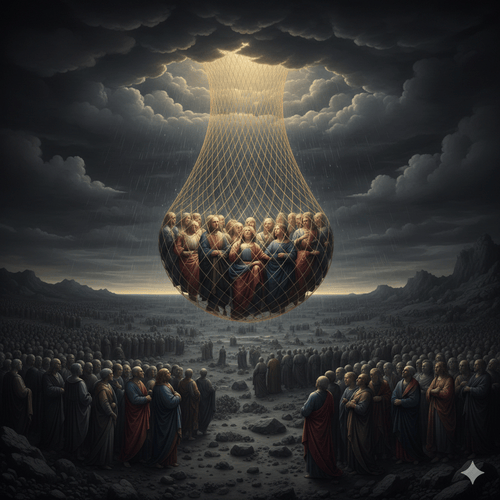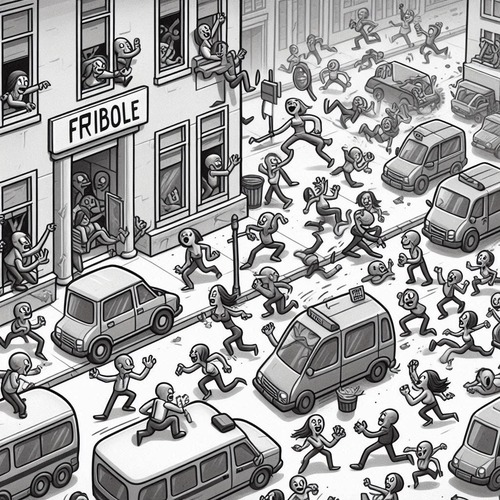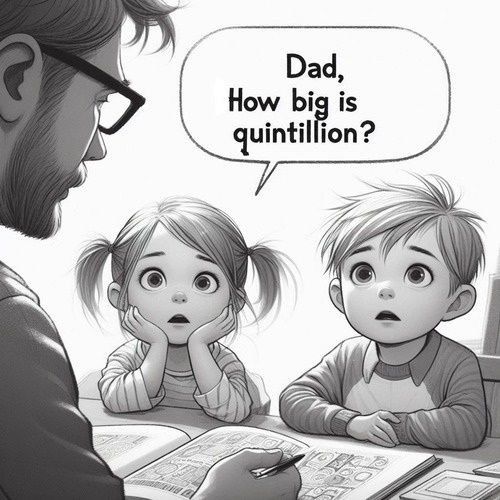Sacred Symmetry: How Fibonacci Numbers Reveal God’s Design
In a world of remarkable patterns and natural wonders, one mathematical sequence appears to underlie much of creation: the Fibonacci Sequence. This unique sequence, found everywhere from pinecones to sunflower seeds, has long fascinated scientists, mathematicians, and nature lovers alike. While the Fibonacci is perhaps the most well-known mathematical pattern in nature, it’s one of many such patterns we observe. From the symmetry of snowflakes to the fractal patterns in ferns, mathematics appears throughout creation in various forms. The Fibonacci represents one particularly fascinating example of this mathematical order.
Could such a consistent, universal pattern arise by mere chance? Or does Fibonacci’s Sequence indicate an intelligent Designer behind the beauty and order we observe in the natural world? Let’s explore Fibonacci’s Sequence, its stunning appearances in nature, and why it may point to God as the ultimate Creator.
Who Was Fibonacci?
The Fibonacci Sequence is named after Leonardo of Pisa, an Italian mathematician born in the 12th century, better known as Fibonacci. In 1202, he published his landmark work, Liber Abaci, or The Book of Calculation, which introduced to Europe the Hindu-Arabic numeral system (the system we use today) and included an intriguing sequence of numbers. The sequence was originally used to model the growth of rabbit populations, but quickly gained recognition for its deep connection to patterns found in nature.
The sequence itself is simple yet profound: each number is the sum of the two preceding ones, starting from 0 and 1. Thus, the sequence unfolds as 0, 1, 1, 2, 3, 5, 8, 13, 21, and so on. As it turns out, this series of numbers isn’t just theoretical; it’s deeply embedded in the natural world, cropping up in plants, animals and weather patterns—even in the proportions of the human body.
What is Fibonacci’s Sequence?
Fibonacci’s Sequence, often associated with the Golden Ratio (approximately 1.618), is a pattern where each number is derived by adding the two previous numbers. This mathematical sequence may sound abstract, but it becomes incredibly tangible when we see its prevalence across nature.
The Golden Ratio appears as the ratio of successive numbers in the Fibonacci Sequence as they increase, and it is widely considered aesthetically pleasing. This ratio, seen in everything from ancient architecture to modern design, lends an order and balance to objects that is not only functional but visually appealing. The omnipresence of this ratio in the world around us begs the question: did it appear by chance, or does it point to something—or Someone—greater?
Fibonacci’s Sequence in Nature: The Fingerprint of God
Fibonacci’s Sequence is woven throughout nature in ways that simply cannot be coincidental. Its patterns can be found in:
- Plants: Many plants follow a Fibonacci arrangement in the number of leaves, petals, or seeds, which allows them to maximise sunlight exposure or seed distribution. For instance, sunflowers display spirals in their seeds that adhere to Fibonacci’s Sequence, optimising the packing density in the flower head.
- Animals: Certain animals, such as molluscs and sea creatures, exhibit the Fibonacci pattern in their shells and other body structures. The widespread presence of this sequence and ratio in living organisms and natural forms points to an intentional design, not a haphazard or random one. This order and consistency speaks to a Designer who not only created but cares about symmetry, beauty, and functionality.
The Fibonacci Blueprint in the Human Body
The Fibonacci Sequence appears in several aspects of the human anatomy, suggesting there is mathematical design in our very structure. For example, each segment of our fingers—from the base of the hand to the tips—follows a ratio akin to the Golden Ratio, derived from the Sequence. Human bodily proportions generally approximate the Golden Ratio, though with natural variations. The proportional harmony allows not only for precise movement but also for a visual symmetry that is aesthetically pleasing.
The Sequence also appears in the proportions of the face and overall body structure. The arrangement of facial features, such as the distance between the eyes, the length of the nose, and the position of the mouth, often align with the Golden Ratio, creating a naturally pleasing balance. Even the human torso and limbs reflect this sequence, as the structure of the body is designed in segments that maintain proportional relationships across different ages and sizes. This order is not only functional but reflects an artistry that resonates with the Creator’s design. To see Fibonacci’s Sequence expressed within us is to recognise we’re fearfully and wonderfully made—a truth that points to intentional design rather than random assembly.
Beyond Evolution: A Call for a Designer
Evolutionary biologists suggest these patterns are simply the result of natural selection, helping organisms grow in ways that optimise survival. However, this explanation doesn’t fully account for the intricate mathematical structures we see. After all, how would random, natural processes produce a precise and consistent sequence like Fibonacci’s that holds true across vastly different forms of life?
From a Creationist perspective, the presence of such organised patterns implies more than just an evolutionary adaptation; it points to an intelligent Designer who structured the universe with wisdom and purpose. The Bible speaks to God’s intentionality in creation, as seen in passages like Psalm 19:1, “The heavens declare the glory of God; the skies proclaim the work of His hands.” The elegant and consistent appearance of Fibonacci’s Sequence in creation seems to reflect this same intentional handiwork.
Fibonacci and the Beauty of Creation
Another remarkable aspect of Fibonacci’s Sequence is its connection to beauty. Human beings are inherently drawn to the Golden Ratio, finding its proportions aesthetically pleasing and harmonious. From ancient art and architecture to contemporary design, this ratio resonates with our sense of beauty, suggesting it serves purposes that extend beyond mere functionality.
Why would evolutionary processes yield something as profoundly beautiful as Fibonacci’s Sequence if it wasn’t for something greater than survival? The Creationist perspective sees this beauty as a reflection of God’s character—a Creator who values not only order but also aesthetic grace. The intricate patterns and symmetry in creation invite us to marvel at God’s artistry and to see Fibonacci’s Sequence as one of many glimpses into His glory.
Answering Objections: The Consistency of Design
Sceptics may argue Fibonacci’s Sequence in nature can be explained solely by natural mechanisms without invoking a Creator. However, this perspective overlooks the striking uniformity and complexity of these patterns. How could such a precise sequence manifest repeatedly across the biological world, the animal kingdom, and even in the human body without intentionality?
The presence of Fibonacci’s Sequence across species, ecosystems, and phenomena points to a guiding intelligence. Even the laws of physics and mathematics that govern this sequence bear marks of consistency and logic. For the Creationist, this points to God as the ultimate Designer, who instilled order and beauty in His creation.
Conclusion: Fibonacci’s Sequence as an Invitation to Worship
Fibonacci Numbers Reveal God’s Design: In a world of randomness and chaos, Fibonacci’s Sequence remains a testament to the order, intelligence, and beauty woven into creation. For those who believe in God, it’s a striking reminder of His handiwork. The Bible encourages us to recognise God’s presence in the world around us. The Fibonacci Sequence serves as one way to observe and appreciate His work. When we encounter these intricate patterns in nature, we’re invited not only to marvel at their beauty but also to consider the One who set them in motion. The Sequence is more than a mathematical oddity; it’s a reflection of divine design that inspires us to worship the Creator, who crafted every leaf, shell, and spiral with care. The Sequence gives us a glimpse of God’s fingerprint on creation—a beautiful, orderliness that points back to Him.
Fibonacci Numbers Reveal God’s Design—Related FAQs:
Cannot the Fibonacci sequence appear due to physical and developmental constraints, rather than design? While it’s true that the Fibonacci sequence aligns with certain growth and development patterns, the question remains why such consistent, orderly rules exist at all. For a creationist, these mathematical “constraints” aren’t just random—they are part of an intentional, orderly framework established by a Designer. The regularity and efficiency of these rules across vastly different systems suggest a purposeful design rather than mere chance.
- Organisms and natural structures don’t always follow the Fibonacci sequence or Golden Ratio. Isn’t this selective observation—focusing only on examples that fit while ignoring countless examples that don’t demonstrate these patterns? While not every organism displays the Fibonacci sequence, its frequent appearance across varied biological systems points to a recurring principle of order. Creationists view these patterns as one of many possible expressions of God’s design, with each ecosystem or organism reflecting different aspects of His creativity. Observing this pattern in diverse instances is significant because it reflects an underlying order, even if not universally applied.
If the Fibonacci sequence is evidence of divine design, why do we see imperfect or approximate rather than exact mathematical patterns in nature? Shouldn’t a designed system show perfect mathematical precision? In nature, the presence of Fibonacci and Golden Ratio patterns is often approximate due to environmental factors and biological variability. From a creationist view, these slight variations reflect God’s design of a natural world that allows flexibility and adaptation. Imperfections in nature do not undermine design but instead show that while order is foundational, the Creator also embedded systems to handle the diversity and complexity of life.
- Can’t the Fibonacci sequence be explained through mathematical modelling and physics without invoking a designer? Mathematical modelling and physical laws may describe how patterns emerge, but they don’t answer why such specific and universal principles exist. For creationists, the presence of these mathematical relationships and the fact that they govern so much of life is evidence of a purposeful Mind behind them. The existence of consistent rules suggests that these principles were established intentionally, making physics and biology reflect deeper order rather than randomness.
Haven’t many of the claimed examples of the Golden Ratio in human anatomy and nature been debunked or shown to be approximations rather than exact matches? Even with approximations, the recurring appearance of the Fibonacci sequence and Golden Ratio across diverse forms in nature points to a deliberate aesthetic in creation. A creationist perspective acknowledges that these patterns might not be precise due to environmental influences or genetic variability, yet their consistent appearance indicates a guiding principle. Design need not be flawlessly exact in every instance to reflect intentionality, especially within a complex, dynamic world.
Fibonacci Numbers Reveal God’s Design—Our Related Posts:
Editor's Pick

Why Do People Hate the Doctrine of Election?
…WHEN THEY REALLY SHOULDN’T Few Bible doctrines provoke stronger reactions than election. The idea that God chose some for salvation [...]

The Doctrine of Providence: Does God Really Govern All Things?
You’re sitting in the doctor’s office when the diagnosis lands like a thunderclap. Your mind races: Why this? Why now? [...]

No Decay, No Defeat: What It Means That Christ’s Body Saw No Corruption
On the Day of Pentecost, Peter stood before thousands and made a startling claim: David's body decayed in the tomb, [...]
SUPPORT US:
Feel the Holy Spirit's gentle nudge to partner with us?
Donate Online:
Account Name: TRUTHS TO DIE FOR FOUNDATION
Account Number: 10243565459
Bank IFSC: IDFB0043391
Bank Name: IDFC FIRST BANK






